Following the Battle of Long Island, the Continental Army slipped away from complete destruction across the river to Manhattan Island and New York City. In an attempt to trap them and end the rebellion, Lord Howe landed his army to the north, at Kip's Bay to cut them off in the City. The rebels, however, slipped away again, and fled up the island, with the Crown Forces in pursuit.
The armies lost sight of each other, and sent scouting parties to attempt to locate the enemy. The British sent their Light Infantry, and the Continentals put together a group of Rangers; the bravest and most competent men from the militia's ranks. The game's scenario begins with the two groups scouring the countryside for each other.
The Light Infantry notices movement in the forest ahead at the edge of the hollow way, an area of low ground between opposing heights at the north and south, and signals for the rest of the line to follow them and engage the enemy.
The rifle-armed American scouts started taking shots at their light infantry counterparts. Despite the extreme range, they managed to start disrupting the oncoming redcoats.
Shaken, but undeterred, the regulars continued to slow-march toward the treeline and the awaiting
While the British line crossed the meadows toward the Yankees, Continental line struggled into position through the wood.
As the line approached the forested area, the Officer leading them hesitated at a crucial moment.
As the line infantry approached the edge of the wood, the American rangers shifted their focus and their fire at them. Their well-aimed rifle fire spread panic through the ranks, and one of the NCOs, grazed by a ball, grabbed the men beside him and made a break for the rear.
Finally in range themselves, the red line blasted out its first full volley, killing many of the Continentals and militia, who stood their ground despite losses.
Their momentum and initiative lost, the British received volley after volley from the Continentals in the wood line, stoically weathering the storm of lead, until a particularly well coordinated crashing volley finally broke their morale. The entire line wavered and fled the deadly fire. His Majesty's officer cadre was unable to rally the men, who retreated en masse, leaving the field and the day to the Yankees.
Some reflection:
The game scenario played out fairly true to the historical battle. My Crown forces came in quite confident of victory through superior drill and resolve, only to find themselves against a much less flimsy enemy than they'd grown accustomed to, who were in a nicely defensible position, too.
Though true to the actual battle, it may have been more fun if the scenario were balanced better. One simple change would make the fight much more even. When I laid out the terrain for the battle, I used short edges for deployment, so I could more accurately recreate an impression of the landscape of Harlem. This made the British have to slog across a 6 foot distance to engage a defending enemy with high ground and cover. Especially given Sharp Practice's unreliable movement distances (or movement at all on any given turn), this was asking a lot of the little lead men. I think that turning the board and deploying on long edges would even up the match quite a bit.

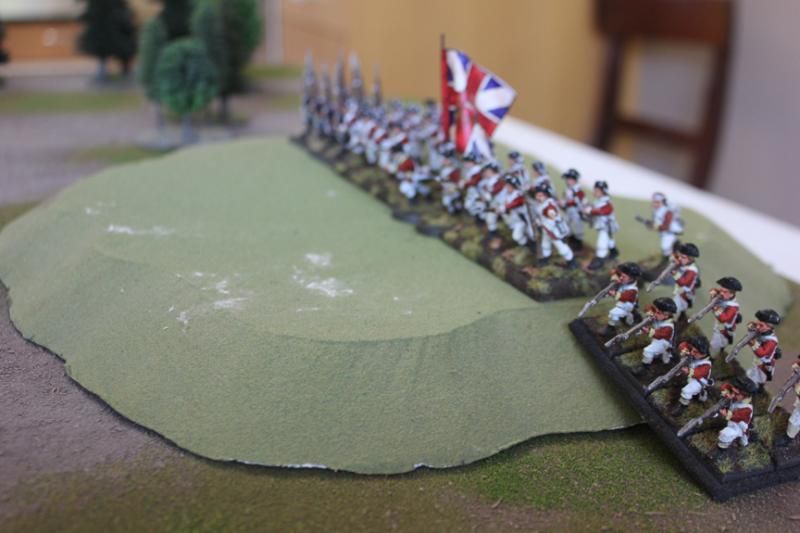



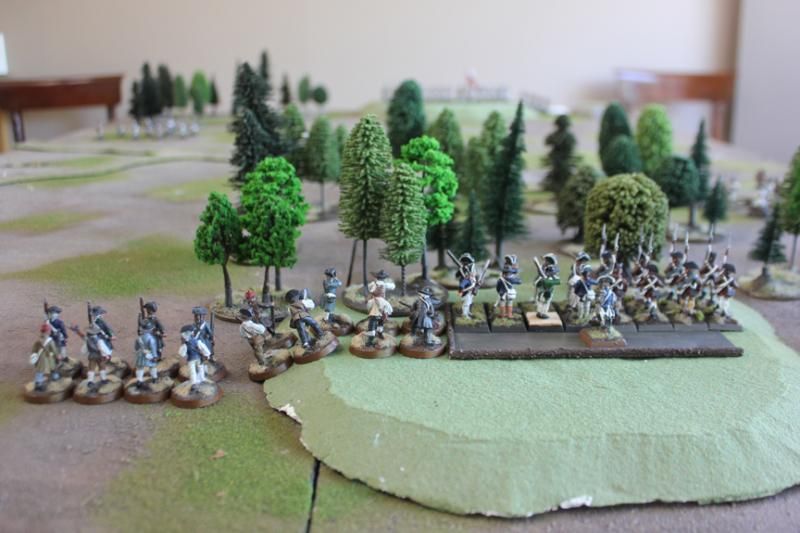

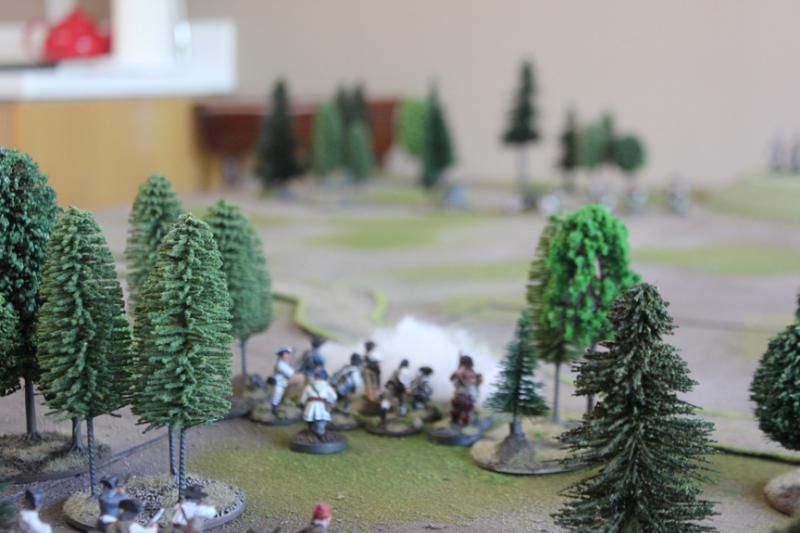

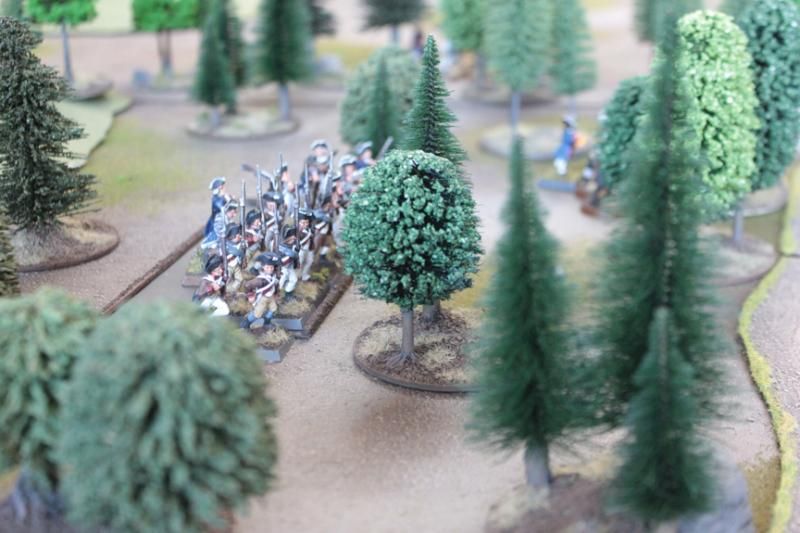
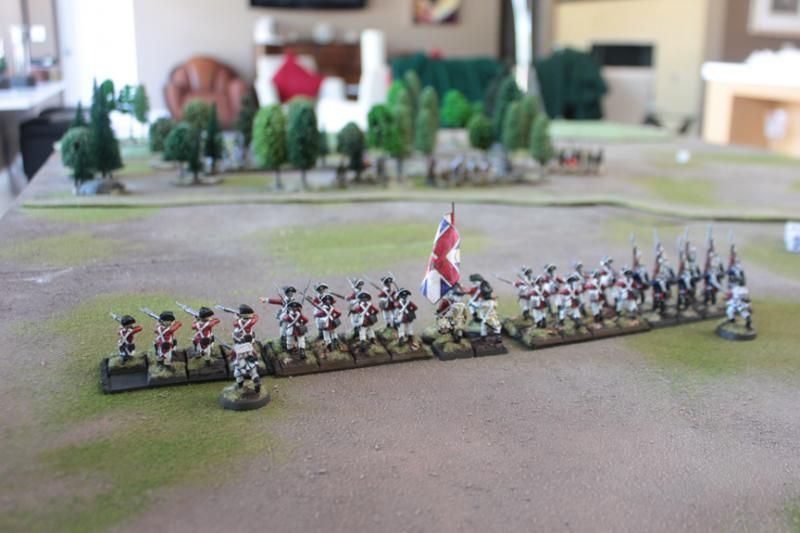
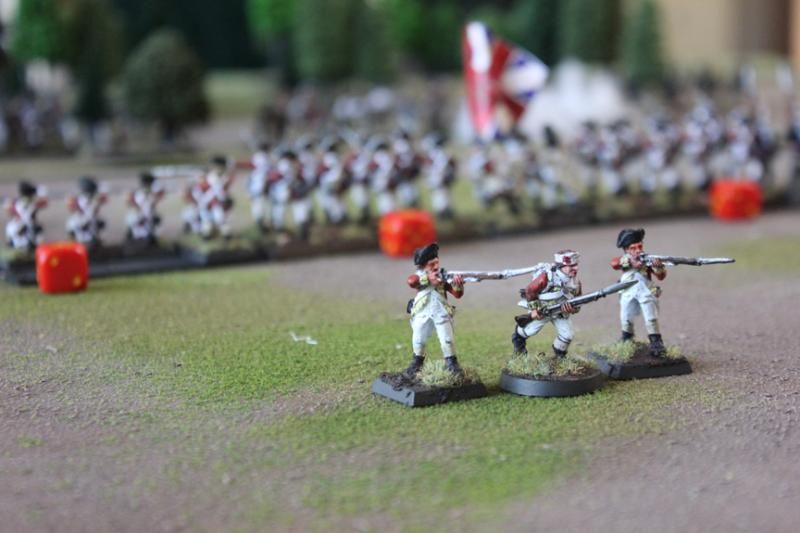


No comments:
Post a Comment